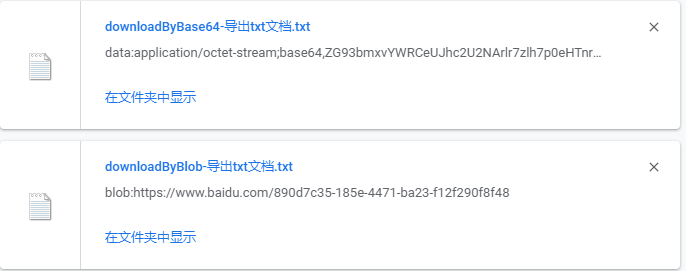面向对象的三大基本特性
封装(把相关的信息(无论数据或方法)存储在对象中的能力)
继承(由另一个类(或多个类)得来类的属性和方法的能力)
多态(一个对象在不同情况下的多种形态)
定义类或对象
第一种:基于Object对象
rush:xhtml;">
var person = new Object();
person.name = "Rose";
person.age = 18;
person.getName = function () {
return this.name;
};
console.log(person.name);//Rose
console.log(person.getName);//function () {return this.name;}
console.log(person.getName());//Rose
缺点:不能创建多个对象。
第二种:基于字面量方式
rush:xhtml;">
var person = {
name : "Rose",age : 18,getName : function () {
return this.name;
}
};
console.log(person.name);//Rose
console.log(person.getName);//function () {return this.name;}
console.log(person.getName());//Rose
优点:比较清楚的查找对象包含的属性和方法;
缺点:不能创建多个对象。
第三种:工厂模式
方式一:
rush:xhtml;">
function createPerson(name,age) {
var object = new Object();
object.name = name;
object.age = age;
object.getName = function () {
return this.name;
};
return object;
}
var person1 = createPerson("Rose",18);
var person2 = createPerson("Jack",20);
console.log(person1.name);//Rose
console.log(person2.name);//Jack
console.log(person1.getName === person2.getName);//false//重复
生成函数,为每个对象都创建独立的
函数版本
优点:可以创建多个对象;
缺点:重复生成函数getName(),为每个对象都创建独立的函数版本。
方式二:
rush:xhtml;">
function createPerson(name,age) {
var object = new Object();
object.name = name;
object.age = age;
object.getName = getName;
return object;
}
function getName() {
return this.name;
}
var person1 = createPerson("Rose",20);
console.log(person1.name);//Rose
console.log(person2.name);//Jack
console.log(person1.getName === person2.getName);//true//共享同
一个函数
优点:可以创建多个对象;
缺点:从语义上讲,函数getName()不太像是Person对象的方法,辨识度不高。
第四种:构造函数方式
方式一:
rush:xhtml;">
function Person(name,age) {
this.name = name;
this.age = age;
this.getName = function () {
return this.name;
}
}
var person1 = new Person("Rose",18);
var person2 = new Person("Jack",20);
console.log(person1.name);//Rose
console.log(person2.name);//Jack
console.log(person1.getName === person2.getName); //false//重复
生成函数,为每个对象都创建独立的
函数版本
优点:可以创建多个对象;
缺点:重复生成函数getName(),为每个对象都创建独立的函数版本。
方式二:
rush:xhtml;">
function Person(name,age) {
this.name = name;
this.age = age;
this.getName = getName ;
}
function getName() {
return this.name;
}
var person1 = new Person("Rose",20);
console.log(person1.name);//Rose
console.log(person2.name);//Jack
console.log(person1.getName === person2.getName); //true//共享同
一个函数
优点:可以创建多个对象;
缺点:从语义上讲,函数getName()不太像是Person对象的方法,辨识度不高。
第五种:原型方式
rush:xhtml;">
function Person() {
}
Person.prototype.name = 'Rose';
Person.prototype.age = 18;
Person.prototype.getName = function () {
return this.name;
};
var person1 = new Person();
var person2 = new Person();
console.log(person1.name);//Rose
console.log(person2.name);//Rose//共享同
一个属性
console.log(person1.getName === person2.getName);//true//共享同
一个函数
缺点:它省略了为构造函数传递初始化参数,这在一定程序带来不便;另外,最主要是当对象的属性是引用类型时,它的值是不变的,总是引用同一个外部对象,所有实例对该对象的操作都会影响其它实例:
rush:xhtml;">
function Person() {
}
Person.prototype.name = 'Rose';
Person.prototype.age = 18;
Person.prototype.lessons = ["语文","数学"];
Person.prototype.getName = function () {
return this.name;
};
var person1 = new Person();
person1.lessons.push("英语");
var person2 = new Person();
console.log(person1.lessons);//["语文","数学","英语"]
console.log(person2.lessons);//["语文","英语"]//person1
修改影响了person2
第六种:构造函数+原型方式(推荐)
rush:xhtml;">
function Person(name,age) {
this.name = name;
this.age = age;
}
Person.prototype.getName = function () {
return this.name;
};
var person1 = new Person('Rose',18);
var person2 = new Person('Jack',20);
console.log(person1.name);//Rose
console.log(person2.name);//Jack
console.log(person1.getName === person2.getName);//true//共享原型中定义的
方法
缺点:属性定义在构造函数内,方法定义在构造函数外,与面向对象的封装思想不符。
第七种:构造函数+动态原型方式(推荐)
方式一:
rush:xhtml;">
function Person(name,age) {
this.name = name;
this.age = age;
if (typeof Person._getName === "undefined"){
Person.prototype.getName = function () {
return this.name;
};
Person._getName = true;
}
}
var person1 = new Person('Rose',20);
console.log(person1.name);//Rose
console.log(person2.name);//Jack
console.log(person1.getName === person2.getName);//true//共享原型中定义的
方法
方式二:
rush:xhtml;">
function Person(name,age) {
this.name = name;
this.age = age;
if (typeof this.getName !== "function"){
Person.prototype.getName = function () {
return this.name;
};
}
}
var person1 = new Person('Rose',20);
console.log(person1.name);//Rose
console.log(person2.name);//Jack
console.log(person1.getName === person2.getName);//true//共享原型中定义的
方法
Javascript的对象可以使用 '.' 操作符动态的扩展其属性,可以使用 'delete' 关键字或将属性的值设置为 'undefined' 来删除属性。
rush:xhtml;">
function Person(name,age) {
this.name = name;
this.age = age;
if (typeof Person._getName === "undefined"){
Person.prototype.getName = function () {
return this.name;
};
Person._getName = true;
}
}
var person = new Person("Rose",18);
person.job = 'Engineer';//
添加属性
console.log(person.job);//Engineer
delete person.job;//
删除属性
console.log(person.job);//undefined//
删除属性后值为undefined
person.age = undefined;//
删除属性
console.log(person.age);//undefined//
删除属性后值为undefined
数据属性
特性:
[configurable]:表示能否使用delete操作符删除从而重新定义,或能否修改为访问器属性。默认为true;
[enumberable]:表示是否可通过for-in循环返回属性。默认true;
[writable]:表示是否可修改属性的值。默认true;
[value]:包含该属性的数据值。读取/写入都是该值。默认为undefined;如上面实例对象person中定义了name属性,其值为'My name',对该值的修改都反正在这个位置
rush:xhtml;">
function Person(name,18);
Object.defineProperty(person,"name",{con
figurable:false,writable:false});
person.name = "Jack";
console.log(person.name);//Rose//重新赋值无效
delete person.name;
console.log(person.name);//Rose//
删除无效
注意:
一旦将configurable设置为false,则无法再使用defineProperty将其修改为true(执行会报错:cannot redefine property : propertyName)
rush:xhtml;">
function Person(name,writable:false});
person.name = "Jack";
console.log(person.name);//Rose//重新赋值无效
delete person.name;
console.log(person.name);//Rose//
删除无效
Object.defineProperty(person,{con
figurable:true,writable:true});//Cannot
redefine property: name
特性:
[configurable]:是否可通过delete操作符删除重新定义属性;
[numberable]:是否可通过for-in循环查找该属性;
[get]:读取属性时调用,默认:undefined;
[set]:写入属性时调用,默认:undefined;
访问器属性不能直接定义,必须使用defineproperty()或defineProperties来定义:如下
rush:xhtml;">
function Person(name,age) {
this.name = name;
this._age = age;
if (typeof Person._getName === "undefined"){
Person.prototype.getName = function () {
return this.name;
};
Person._getName = true;
}
}
var person = new Person("Rose","age",{
get:function () {
return this._age;
},set:function (age) {
this._age = age;
}});
person.age = 20;
console.log(person.age);//20//person.age=20是使用set
方法将20赋值给_age,person.age是使用get
方法将_age的读取出来
console.log(person._age);//20
使用Object.getownPropertyNames(object)方法可以获取所有的属性;
使用Object.getownPropertyDescriptor(object,property)方法可以取得给定属性的特性;
rush:xhtml;">
function Person(name,set:function (age) {
this._age = age;
}});
console.log(Object.g
etownPropertyNames(person));//["name","_age","age"]
console.log(Object.g
etownPropertyDescriptor(person,"age"));//{enumerable: false,con
figurable: false,get: function,set: function}
对于数据属性,可以取得:configurable,enumberable,writable和value;
对于访问器属性,可以取得:configurable,get和set;
继承机制实现
对象冒充
rush:xhtml;">
function Father(name) {
this.name = name ;
this.getName = function () {
return this.name;
}
}
function Son(name,age) {
this._newMethod = Father;
this._newMethod(name);
delete this._newMethod;
this.age = age;
this.getAge = function () {
return this.age;
}
}
var father = new Father("Tom");
var son = new Son("Jack",18);
console.log(father.getName());//Tom
console.log(son.getName());//Jack//继承父类getName()方法
console.log(son.getAge());//18
多继承(利用对象冒充可以实现多继承)
rush:xhtml;">
function FatherA(name) {
this.name = name ;
this.getName = function () {
return this.name;
}
}
function FatherB(job) {
this.job = job;
this.getJob = function () {
return this.job;
}
}
function Son(name,job,age) {
this._newMethod = FatherA;
this._newMethod(name);
delete this._newMethod;
this._newMethod = FatherB;
this._newMethod(job);
delete this._newMethod;
this.age = age;
this.getAge = function () {
return this.age;
}
}
var fatherA = new FatherA("Tom");
var fatherB = new FatherB("Engineer");
var son = new Son("Jack","Programmer",18);
console.log(fatherA.getName());//Tom
console.log(fatherB.getJob());//Engineer
console.log(son.getName());//Jack//继承父类FatherA的getName()方法
console.log(son.getJob());//Programmer//继承父类FatherB的getJob()方法
console.log(son.getAge());//18
call()方法
rush:xhtml;">
function Father(name) {
this.name = name ;
this.getName = function () {
return this.name;
}
}
function Son(name,age) {
Father.call(this,name);
this.age = age;
this.getAge = function () {
return this.age;
}
}
var father = new Father("Tom");
var son = new Son("Jack",18);
console.log(father.getName());//Tom
console.log(son.getName());//Jack//继承父类getName()方法
console.log(son.getAge());//18
多继承(利用call()方法实现多继承)
rush:xhtml;">
function FatherA(name) {
this.name = name ;
this.getName = function () {
return this.name;
}
}
function FatherB(job) {
this.job = job;
this.getJob = function () {
return this.job;
}
}
function Son(name,age) {
FatherA.call(this,name);
FatherB.call(this,job);
this.age = age;
this.getAge = function () {
return this.age;
}
}
var fatherA = new FatherA("Tom");
var fatherB = new FatherB("Engineer");
var son = new Son("Jack",18);
console.log(fatherA.getName());//Tom
console.log(fatherB.getJob());//Engineer
console.log(son.getName());//Jack//继承父类FatherA的getName()方法
console.log(son.getJob());//Programmer//继承父类FatherB的getJob()方法
console.log(son.getAge());//18
apply()方法
rush:xhtml;">
function Father(name) {
this.name = name ;
this.getName = function () {
return this.name;
}
}
function Son(name,age) {
Father.apply(this,new Array(name));
this.age = age;
this.getAge = function () {
return this.age;
}
}
var father = new Father("Tom");
var son = new Son("Jack",18);
console.log(father.getName());//Tom
console.log(son.getName());//Jack//继承父类getName()方法
console.log(son.getAge());//18
多继承(利用apply()方法实现多继承)
rush:xhtml;">
function FatherA(name) {
this.name = name ;
this.getName = function () {
return this.name;
}
}
function FatherB(job) {
this.job = job;
this.getJob = function () {
return this.job;
}
}
function Son(name,age) {
FatherA.apply(this,new Array(name));
FatherB.apply(this,new Array(job));
this.age = age;
this.getAge = function () {
return this.age;
}
}
var fatherA = new FatherA("Tom");
var fatherB = new FatherB("Engineer");
var son = new Son("Jack",18);
console.log(fatherA.getName());//Tom
console.log(fatherB.getJob());//Engineer
console.log(son.getName());//Jack//继承父类FatherA的getName()方法
console.log(son.getJob());//Programmer//继承父类FatherB的getJob()方法
console.log(son.getAge());//18
rush:xhtml;">
function Father() {
}
Father.prototype.name = "Tom";
Father.prototype.getName = function () {
return this.name;
};
function Son() {
}
Son.prototype = new Father();
Son.prototype.age = 18;
Son.prototype.getAge = function () {
return this.age;
};
var father = new Father();
var son = new Son();
console.log(father.getName());//Tom
console.log(son.getName());//Tom//继承
父类FatherA的getName()
方法
console.log(son.getAge());//18
混合方式(call()+原型链)
rush:xhtml;">
function Father(name) {
this.name = name;
}
Father.prototype.getName = function () {
return this.name;
};
function Son(name,name);
this.age = age;
}
Son.prototype = new Father();
Son.prototype.getAge = function () {
return this.age;
};
var father = new Father("Tom");
var son = new Son("Jack",18);
console.log(father.getName());//Tom
console.log(son.getName());//Jack//继承
父类Father的getName()
方法
console.log(son.getAge());//18
多态机制实现
rush:xhtml;">
function Person(name) {
this.name = name;
if (typeof this.getName !== "function"){
Person.prototype.getName = function () {
return this.name;
}
}
if (typeof this.toEat !== "function"){
Person.prototype.toEat = function (animal) {
console.log( this.getName() + "说去吃饭:");
animal.eat();
}
}
}
function Animal(name) {
this.name = name;
if (typeof this.getName !== "function"){
Animal.prototype.getName = function () {
return this.name;
}
}
}
function Cat(name) {
Animal.call(this,name);
if (typeof this.eat !== "function"){
Cat.prototype.eat = function () {
console.log(this.getName() + "吃鱼");
}
}
}
Cat.prototype = new Animal();
function Dog(name) {
Animal.call(this,name);
if (typeof this.eat !== "function"){
Dog.prototype.eat = function () {
console.log(this.getName() + "啃骨头");
}
}
}
Dog.prototype = new Animal();
var person = new Person("Tom");
person.toEat(new Cat("cat"));//Tom说去吃饭:cat吃鱼
person.toEat(new Dog("dog"));//Tom说去吃饭:dog啃骨头
以上这篇老生常谈javascript的面向对象思想就是小编分享给大家的全部内容了,希望能给大家一个参考,也希望大家多多支持编程之家。






